The Impact of AI on Business
Artificial Intelligence (AI) is no longer a concept of the future.
It’s here, transforming the way we do business.

From automating routine tasks to driving innovation, AI is reshaping business technology. It’s not just about robots and automation. AI is about smart, data-driven decision making.
AI is also enhancing customer service. Chatbots and virtual assistants are becoming the norm, providing 24/7 support. Predictive analytics, powered by AI, are helping businesses anticipate market trends.
But integrating AI into business isn’t without challenges. It requires a thorough business technology assessment. It demands an understanding of the ethical implications and a readiness to adapt.
This article explores the impact of AI on business. It provides an intro to business and technology in the age of AI. It’s a guide to navigating the AI-driven business landscape. Whether you’re a business owner, a tech enthusiast, or a student, you’ll find valuable insights here.
Introduction to AI in Business
AI is a branch of computer science. It’s about creating machines that mimic human intelligence. But it’s not just about replicating human thought. It’s about augmenting it, enhancing it.
In business, AI is a game-changer. It’s transforming how we work, how we make decisions. It’s changing the very fabric of business technology.
AI is not a single technology. It’s a collection of technologies. Machine learning, natural language processing, robotics – these are all part of AI.
The potential of AI in business is vast. It’s a tool for innovation, a catalyst for change. It’s the future of business technology.
The Current Landscape of AI in Business
AI is no longer a novelty. It’s a reality in the business world. Companies of all sizes are embracing AI. They’re using it to drive growth, to gain a competitive edge.
The use of AI in business is diverse. It’s used in customer service, in marketing, in operations. It’s used to automate tasks, to analyze data, to predict trends.
Here are some key trends in AI adoption:
- Increased use of AI in decision-making
- Growing reliance on AI for customer engagement
- Rising demand for AI skills in the workforce
- Expansion of AI in non-tech industries
- Emergence of AI ethics as a key concern
AI is not just a tool. It’s a strategic asset. It’s a key driver of business innovation. It’s shaping the future of business technology.
Automating Routine Tasks with AI
AI is a game-changer in business operations. It’s automating routine tasks. It’s freeing up human resources. It’s increasing efficiency.
Take customer service, for example. AI chatbots are handling basic queries. They’re available 24/7. They’re providing instant responses.
In HR, AI is streamlining recruitment. It’s scanning resumes. It’s shortlisting candidates. It’s scheduling interviews.
In finance, AI is automating invoicing. It’s managing payroll. It’s detecting fraud. It’s reducing errors.
AI is not replacing humans. It’s augmenting human capabilities. It’s allowing us to focus on higher-value tasks. It’s transforming the way we work.
AI and Data-Driven Decision Making
AI is powering data-driven decision making. It’s helping businesses make sense of vast data. It’s turning raw data into actionable insights.
AI algorithms are analyzing customer behavior. They’re predicting trends. They’re informing marketing strategies.
In supply chain management, AI is optimizing logistics. It’s predicting demand. It’s managing inventory. It’s reducing waste.
AI is enabling real-time decision making. It’s providing a competitive edge. It’s driving business growth. It’s shaping the future of business technology.
Enhancing Customer Service Through AI
AI is revolutionizing customer service. It’s powering chatbots and virtual assistants. It’s providing 24/7 support. It’s improving customer experience.
AI is personalizing interactions. It’s understanding customer needs. It’s offering tailored solutions. It’s increasing customer satisfaction.
AI is automating responses. It’s handling routine queries. It’s freeing up human agents. It’s allowing them to focus on complex issues.
AI is transforming customer service. It’s setting new standards. It’s driving customer loyalty. It’s contributing to business success.
Predictive Analytics and Industry Applications
AI is powering predictive analytics. It’s analyzing past data. It’s predicting future trends. It’s helping businesses make informed decisions.
AI is transforming industries. It’s predicting customer behavior in retail. It’s forecasting market trends in finance. It’s improving patient care in healthcare.
AI is optimizing operations. It’s predicting maintenance needs in manufacturing. It’s forecasting demand in supply chain. It’s enhancing efficiency.
AI is driving innovation. It’s creating new business models. It’s opening up new opportunities. It’s shaping the future of industries.
AI’s Role in Cybersecurity
AI is enhancing cybersecurity. It’s detecting threats in real-time. It’s preventing cyber attacks. It’s protecting business data.
AI is automating security tasks. It’s identifying vulnerabilities. It’s responding to incidents. It’s reducing human error.
AI is shaping the future of cybersecurity. It’s developing advanced defense mechanisms. It’s improving security protocols. It’s ensuring business safety.
Case Studies: Successful AI Integration
Amazon is a prime example of successful AI integration. They use AI for personalized recommendations. It’s boosting their sales. It’s enhancing customer experience.
Netflix uses AI for content curation. It’s predicting viewer preferences. It’s driving user engagement. It’s increasing subscription rates.
Tesla is leveraging AI for self-driving cars. It’s revolutionizing transportation. It’s promoting safety. It’s shaping the future of mobility.
AI is transforming businesses. It’s creating value. It’s driving growth. It’s setting new industry standards.
Business Technology Assessment for AI Integration
Before integrating AI, a business technology assessment is crucial. It helps identify readiness. It uncovers potential challenges.
The assessment should evaluate existing infrastructure. It should consider data quality. It should assess workforce skills.
A thorough assessment guides successful AI integration. It ensures alignment with business goals. It paves the way for innovation.
Challenges and Considerations in AI Adoption
Adopting AI is not without challenges. It requires significant investment. It demands a skilled workforce. It raises ethical concerns.
Businesses must consider these factors. They must strategize to overcome these hurdles. They must ensure AI adoption aligns with their vision.
Conclusion: Embracing AI for Business Innovation
AI is transforming the business landscape. It’s driving innovation and efficiency. It’s creating new opportunities and challenges.
Businesses must embrace this change. They must adapt to stay competitive. They must leverage AI to enhance their operations.
However, successful AI integration requires careful planning. It requires a thorough business technology assessment. It demands a strategic approach.
In conclusion, AI is not just a trend. It’s a powerful tool that can redefine business operations. It’s a catalyst for business innovation. Embracing AI is no longer an option, but a necessity for businesses to thrive in the digital age.
Building better solutions for better business®




